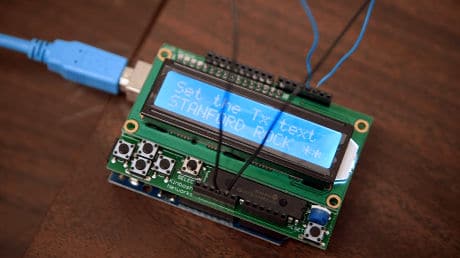
A machine that translates digital messages and transmits them using household chemicals could provide low-cost, self-powered nanotechnology devices that could travel around the human body harmlessly.
Postdoctoral research fellow Nariman Farsad has developed the system which translates the typical zero and ones of digital communication into pulses of vinegar or glass cleaner.
A message is typed into a computer which sends a signal to a machine that pumps out the corresponding ‘bits’ of chemicals, which travel through plastic tubes to a small container with a pH sensor. Changes in pH are then transmitted to a computer that deciphers the encoded message.
Wireless and affordable, the system could function in places where typical electromagnetic communications systems struggle, such as underwater or in places containing lots of metal.
The member of the Wireless Systems Lab at Stanford University in the US says the system could relay secret messages or allow tiny devices to communicate inside the human body.
A video demonstrates the technology:
Cost-effective nanotechnology already exists, but these devices are so small that, in order to communicate, they have to be wired together or depend on high-frequency signals, which could potentially cause organ damage, Farsad says.
These signals also tend to only travel short distances and powering them has yet to be figured out.
As an alternative, chemical-based data exchange could be self-powered, traveling throughout the body harmlessly and undetectable by outside devices.
“This is one of the most important potential applications for this type of project,” Farsad says. “It could enable the emergence of these tiny devices that are working together, talking together and doing useful things.”
Next: Visit the NFCW Expo to find new suppliers and solutions